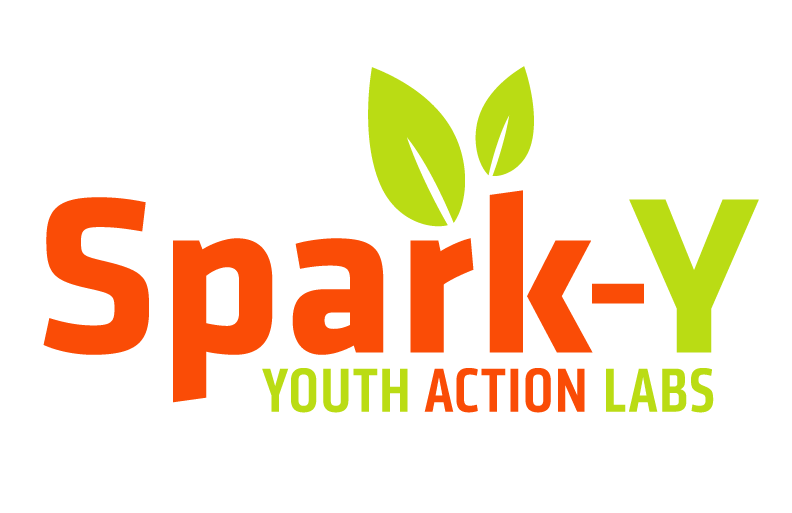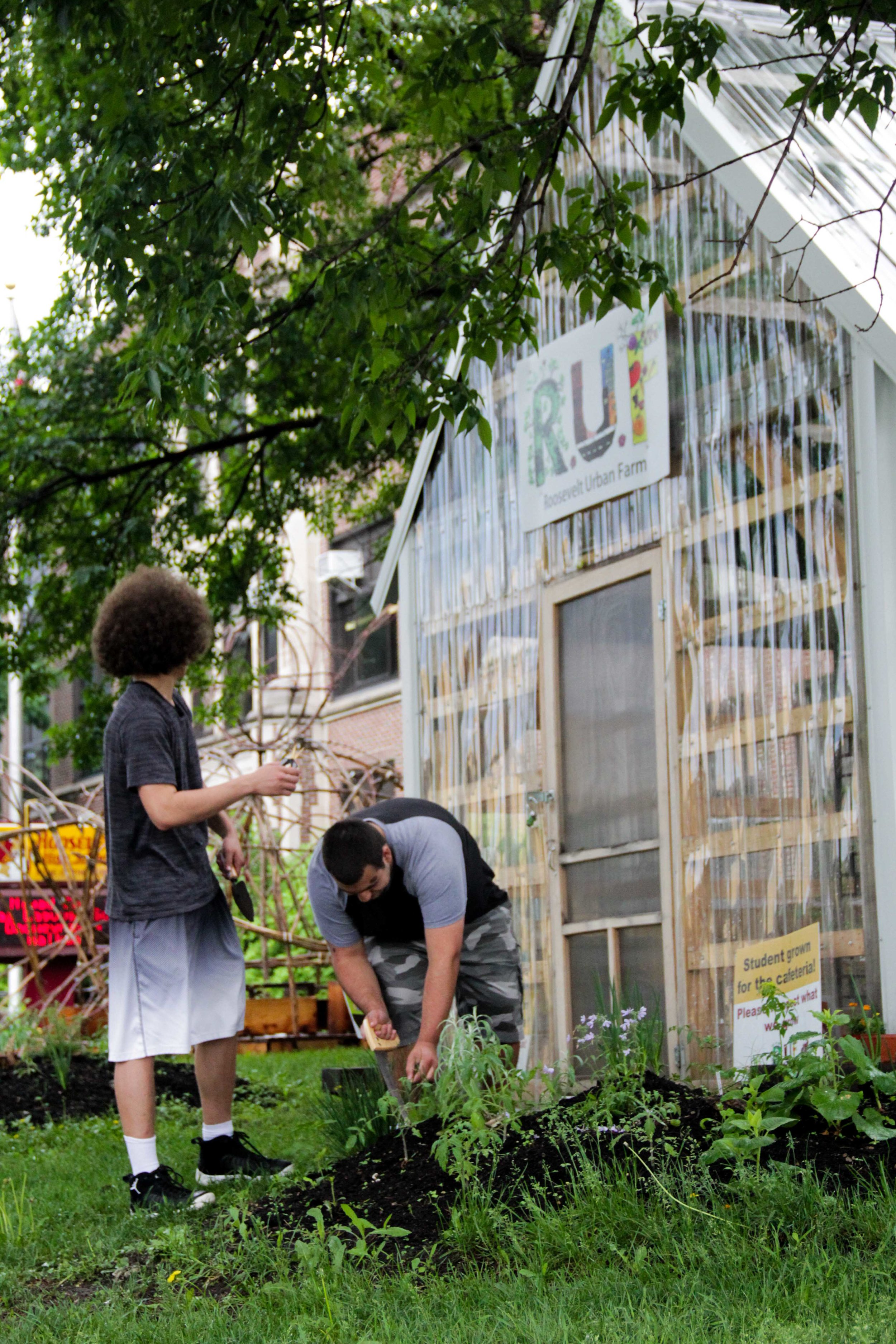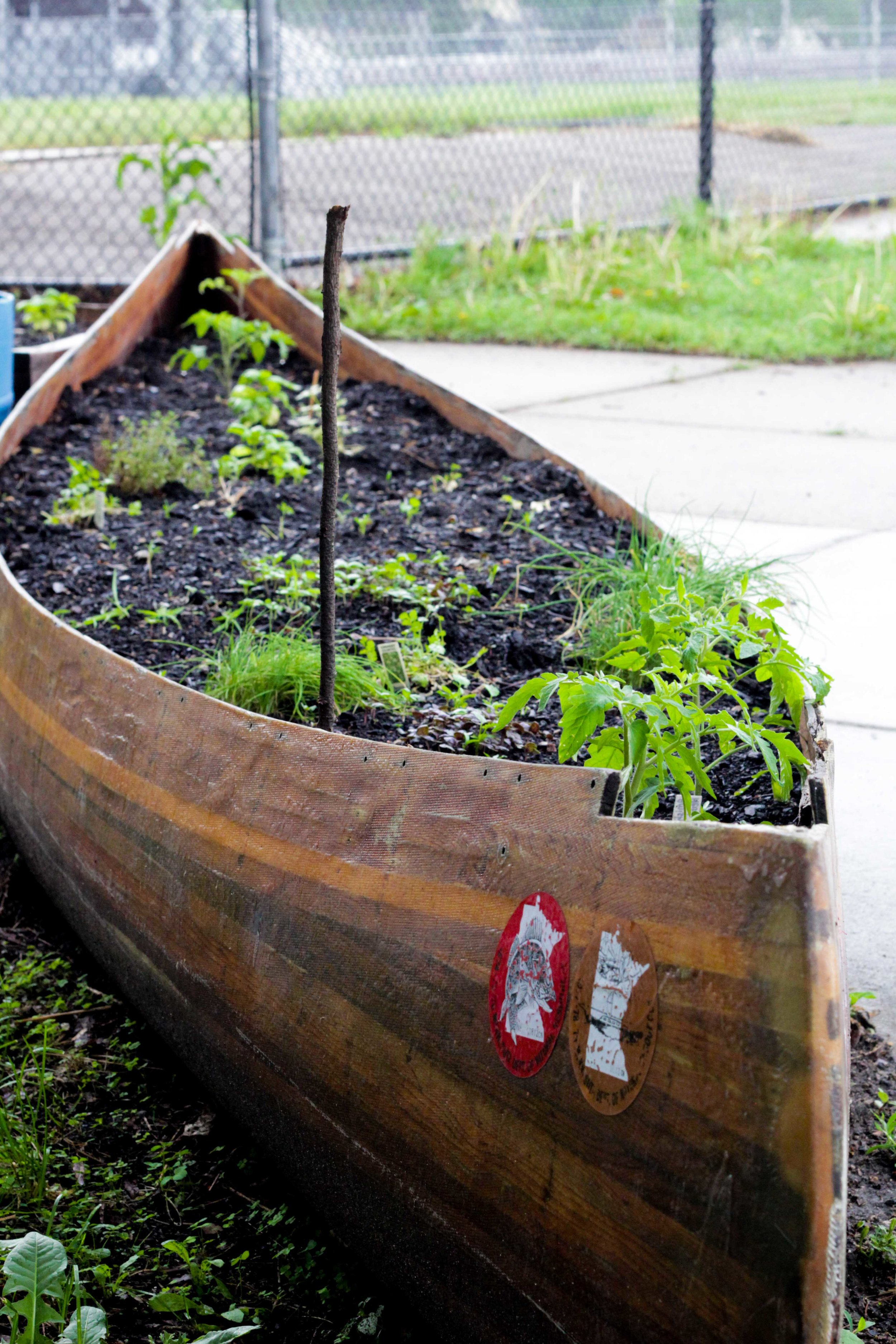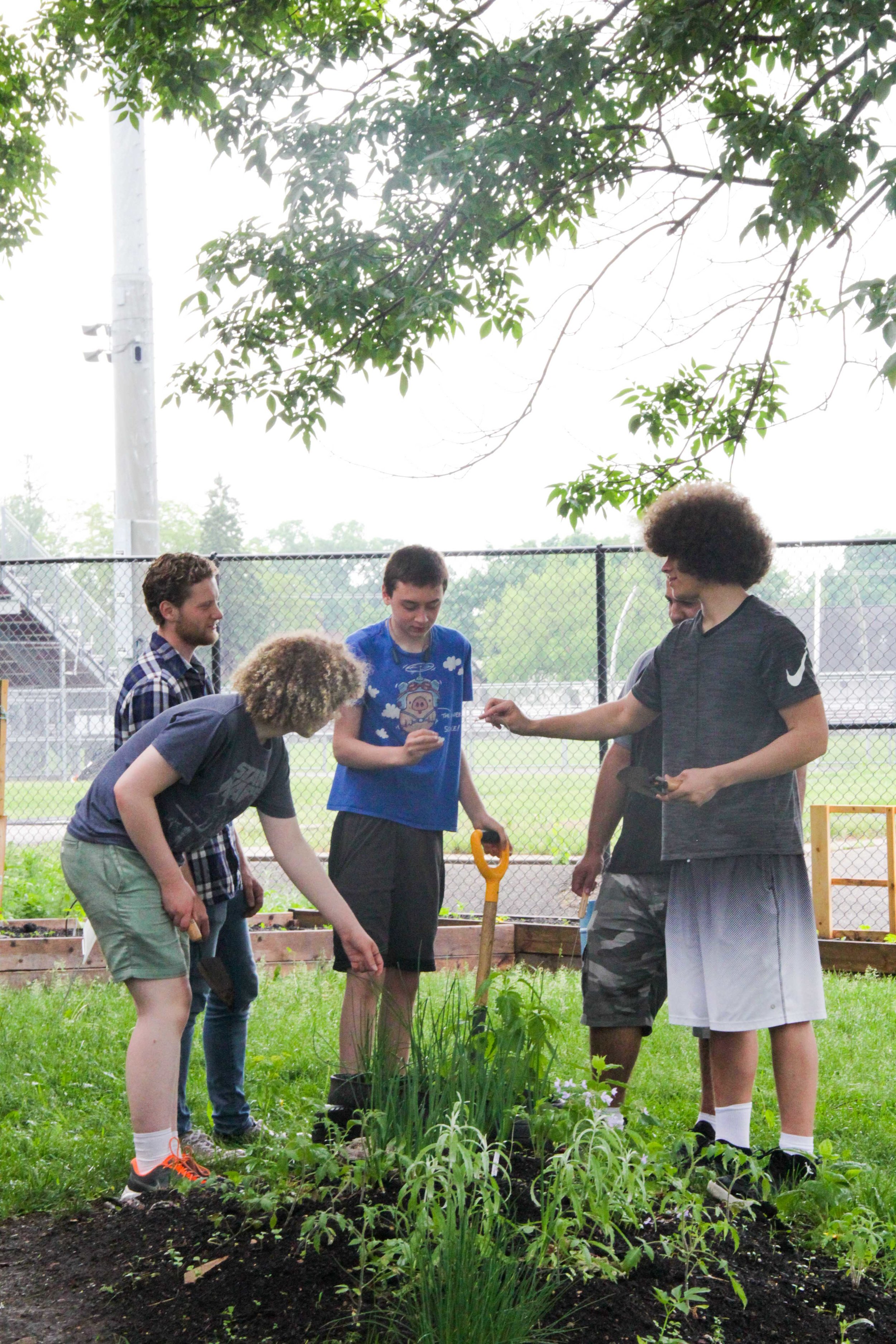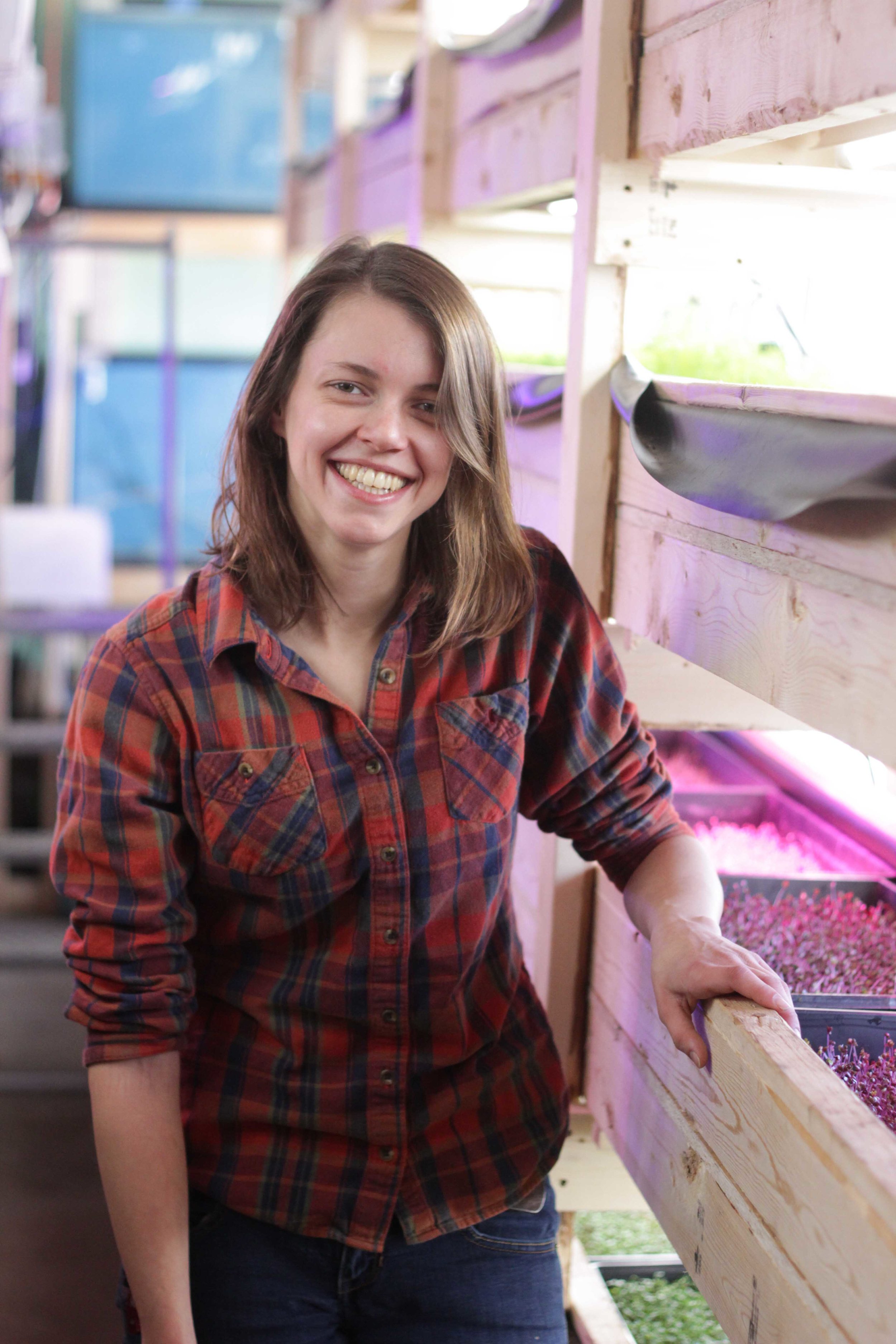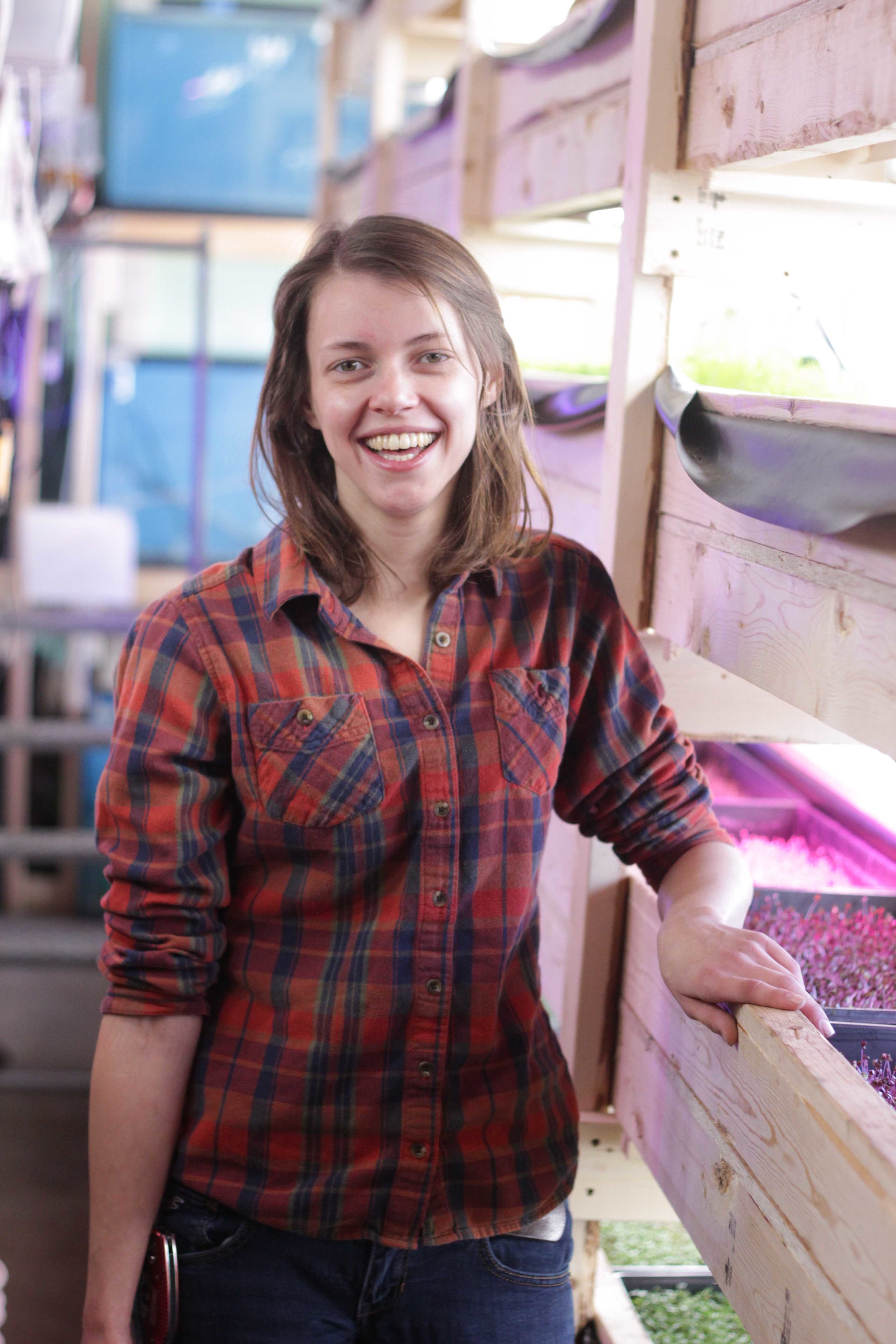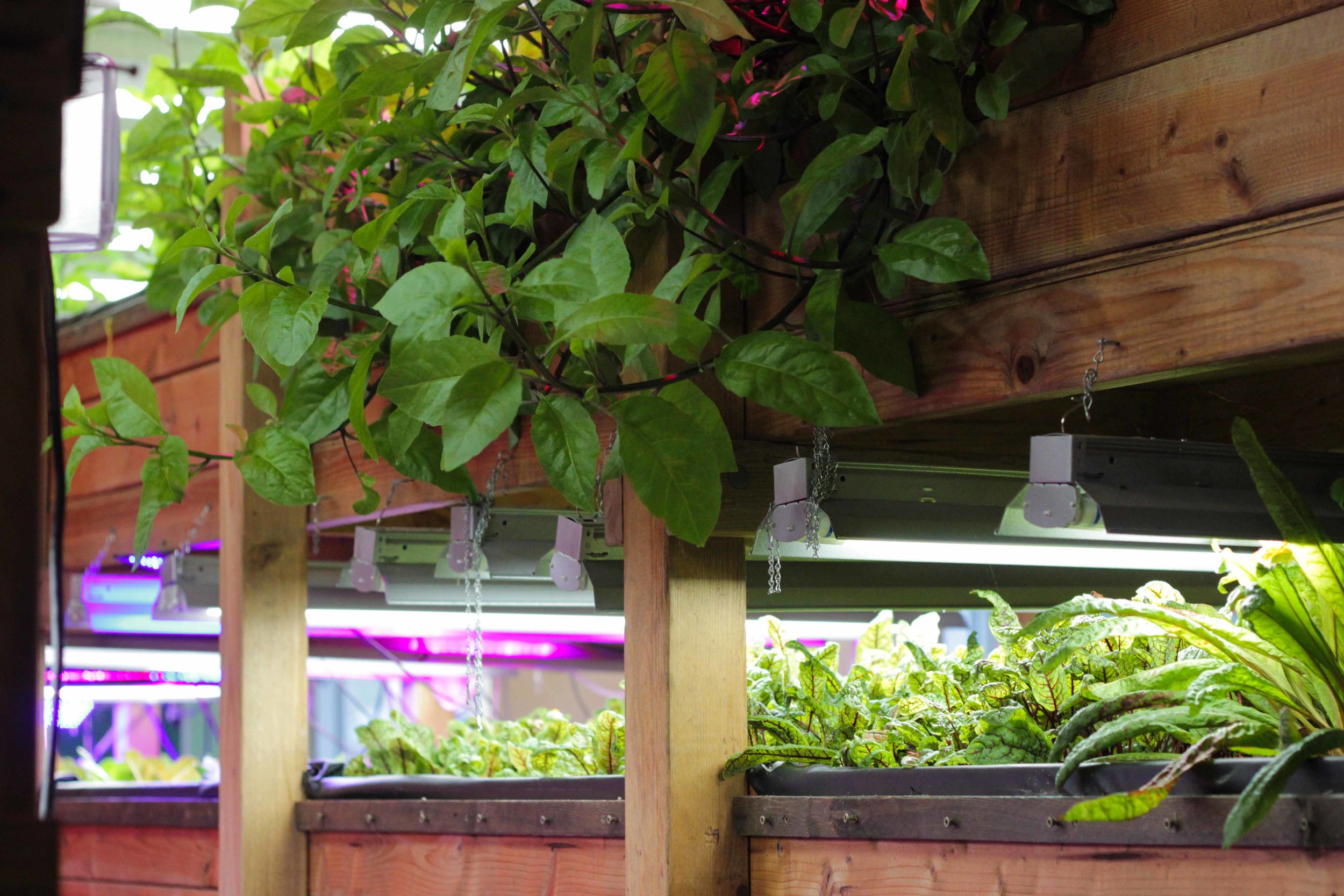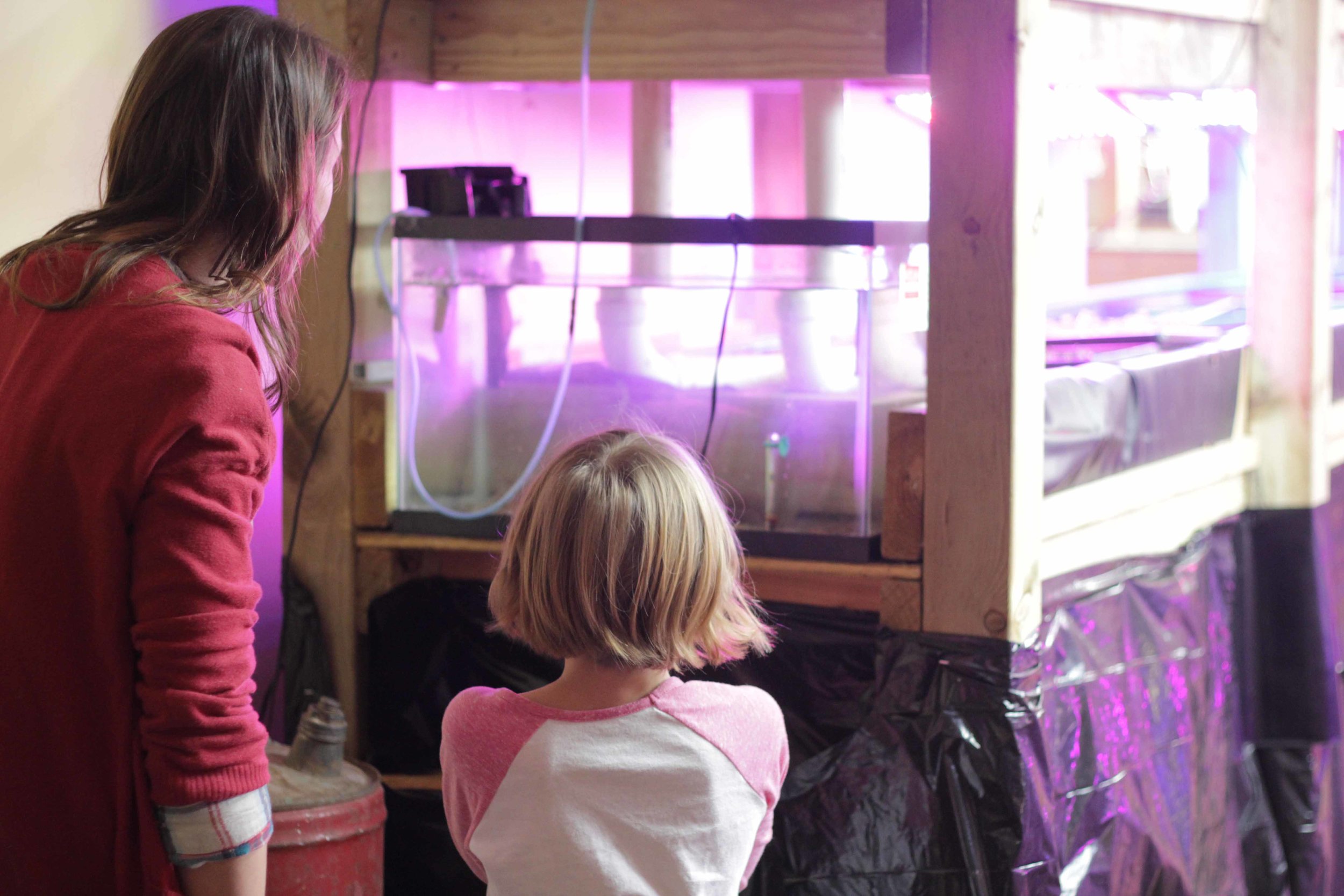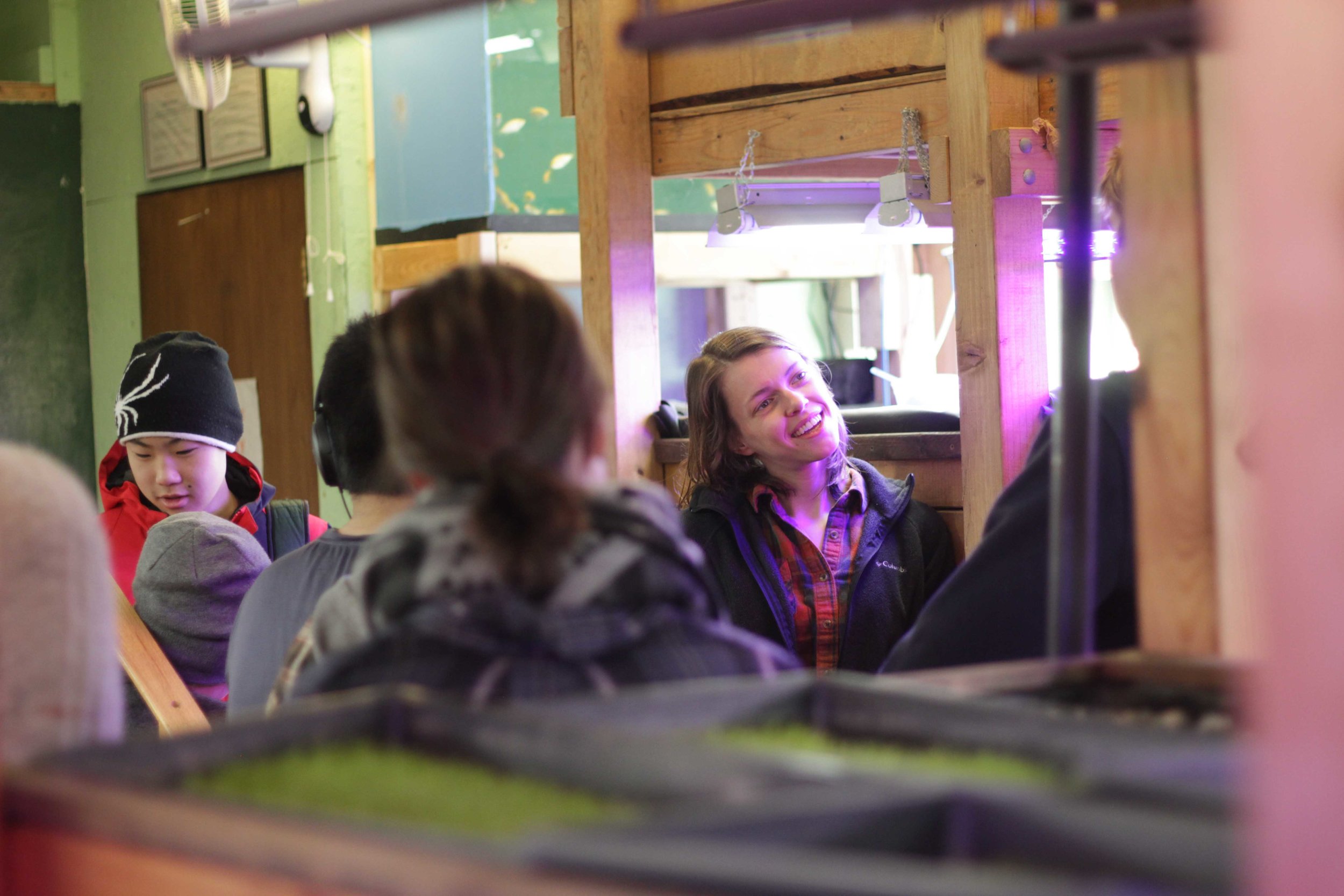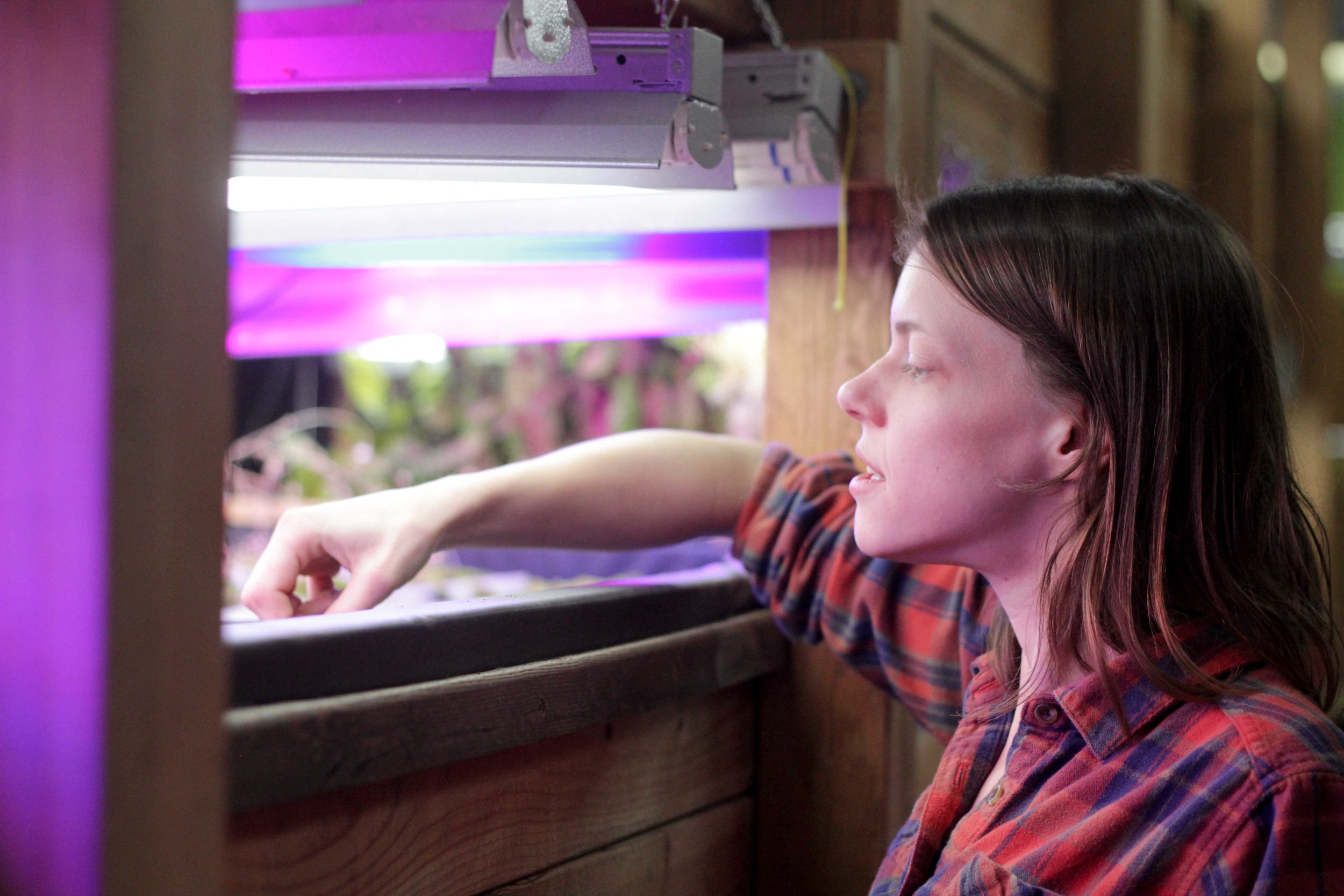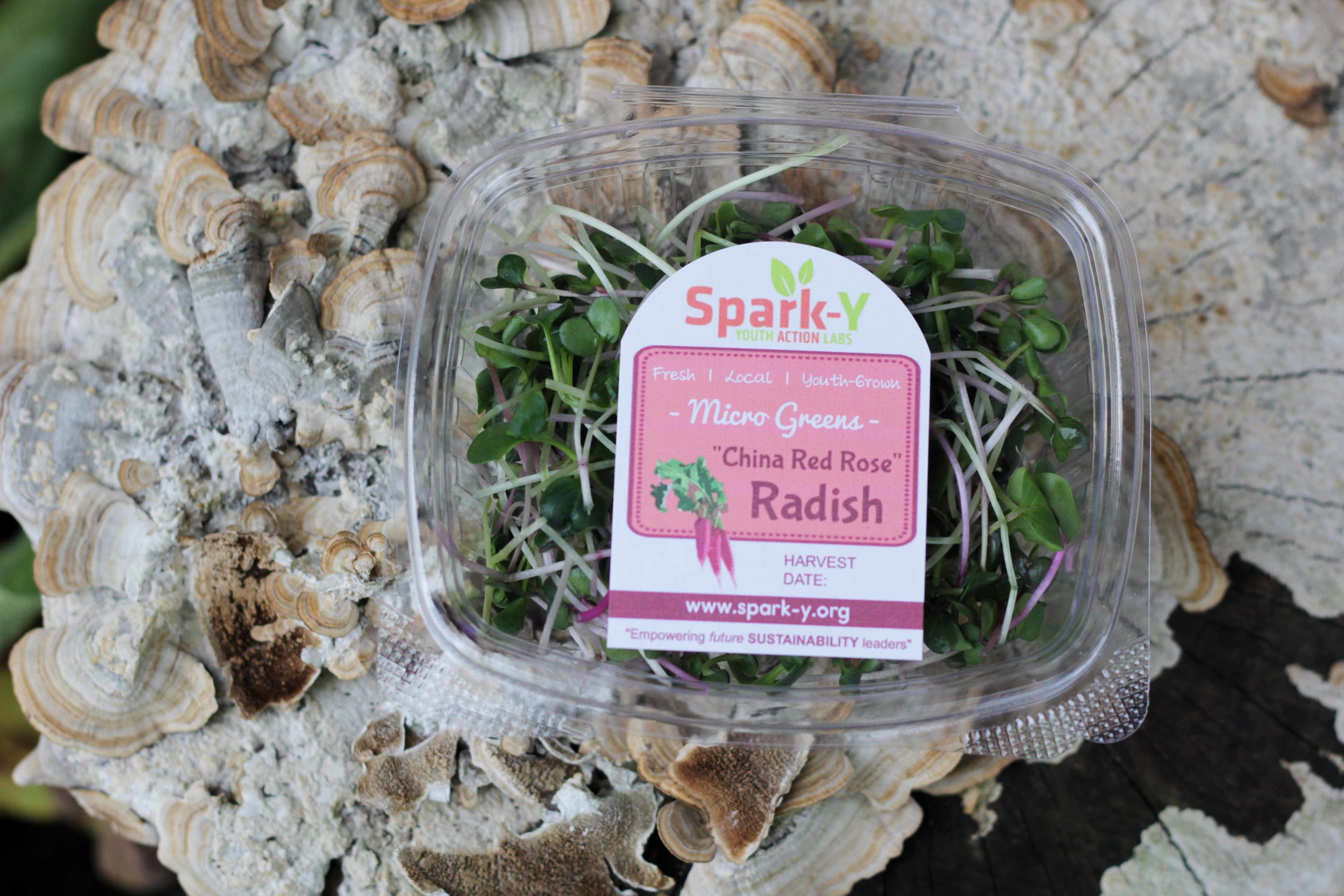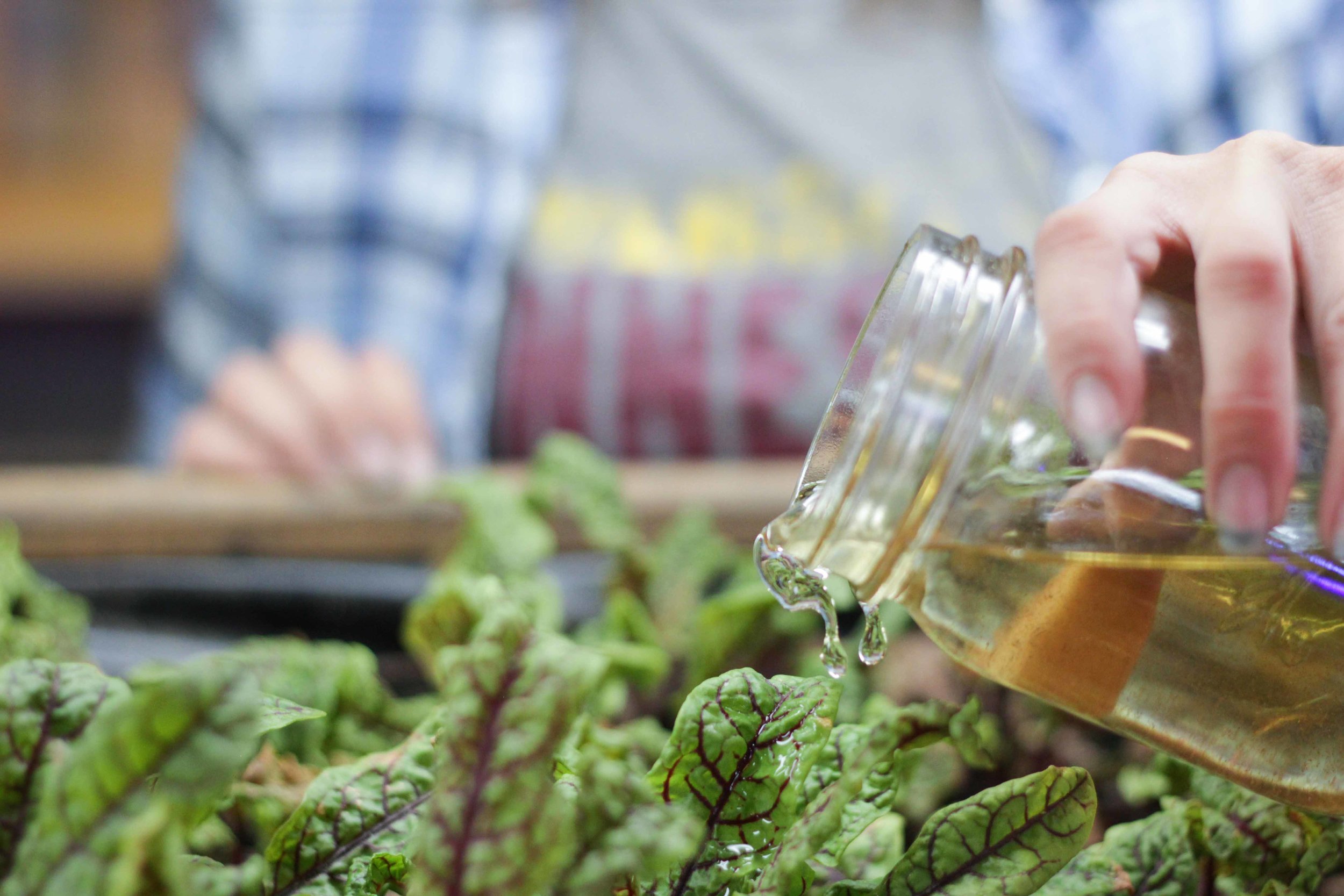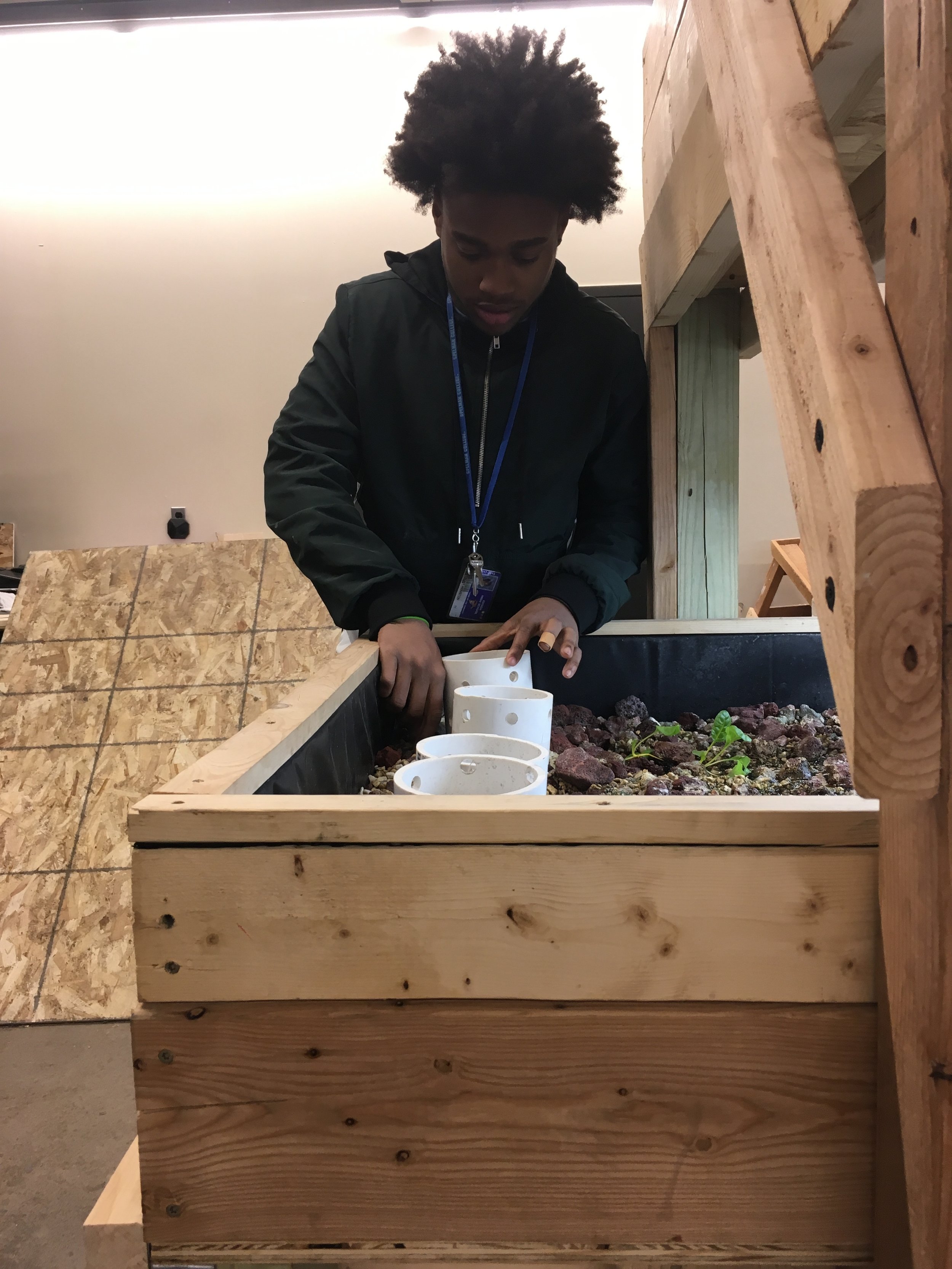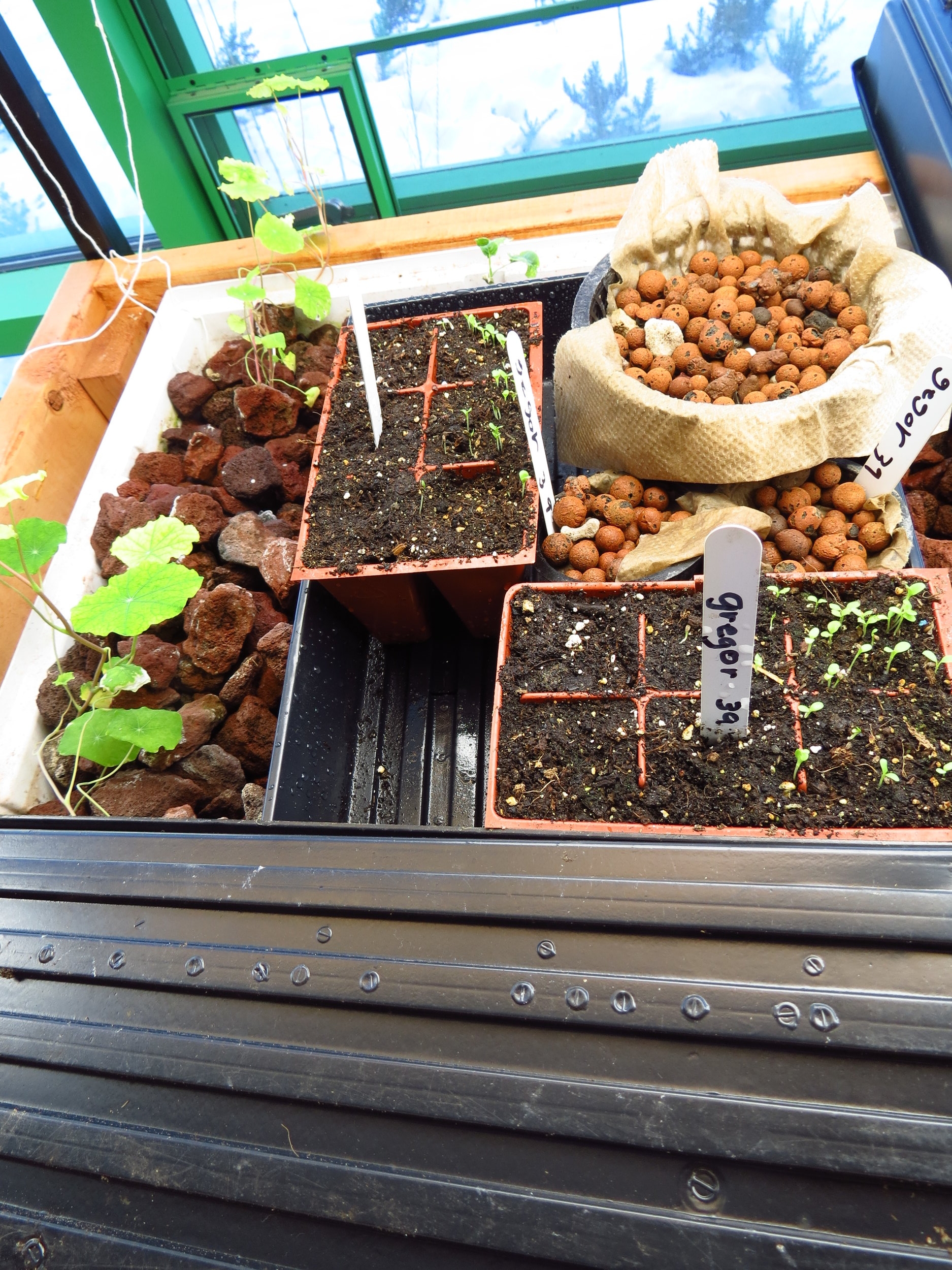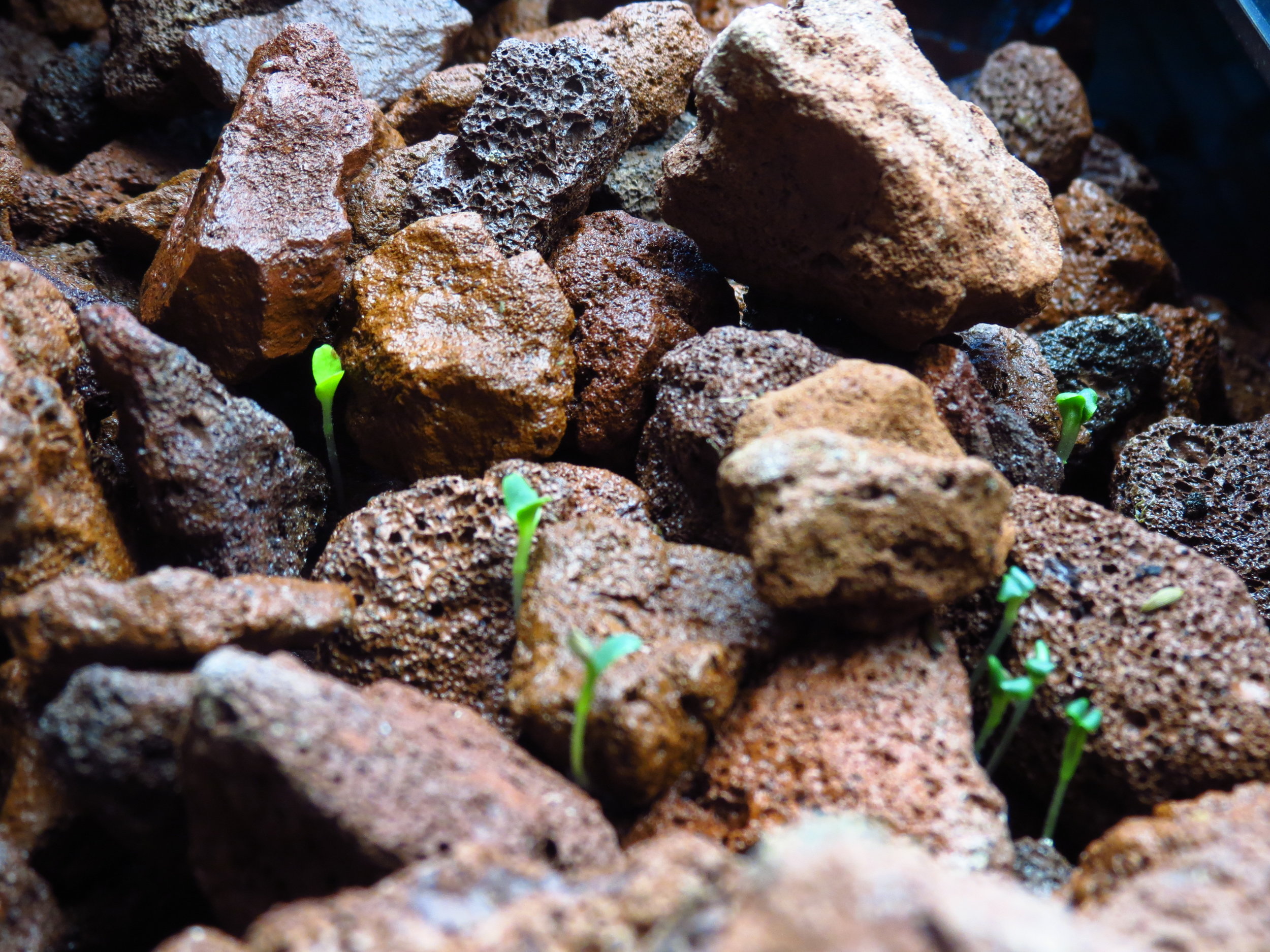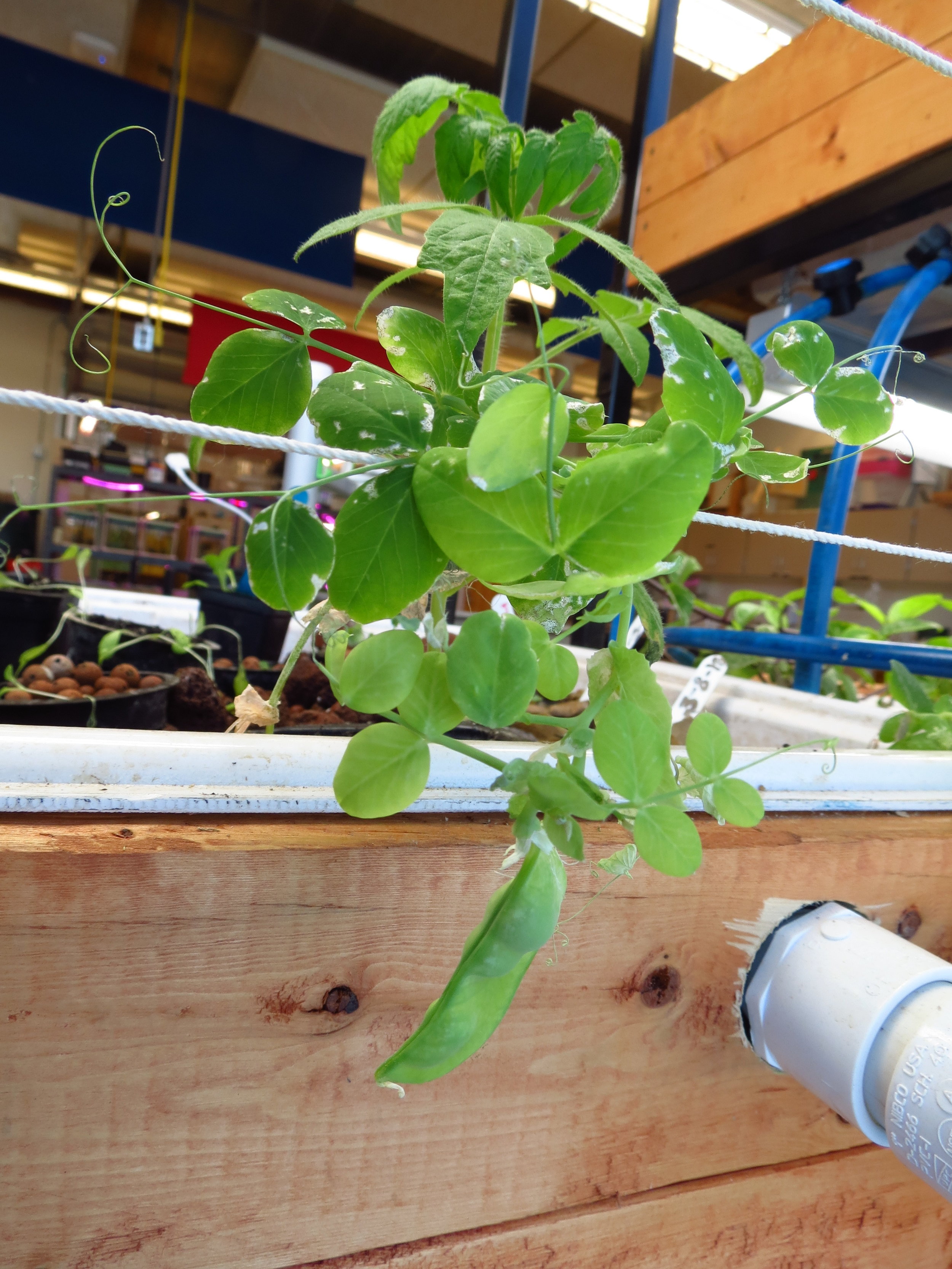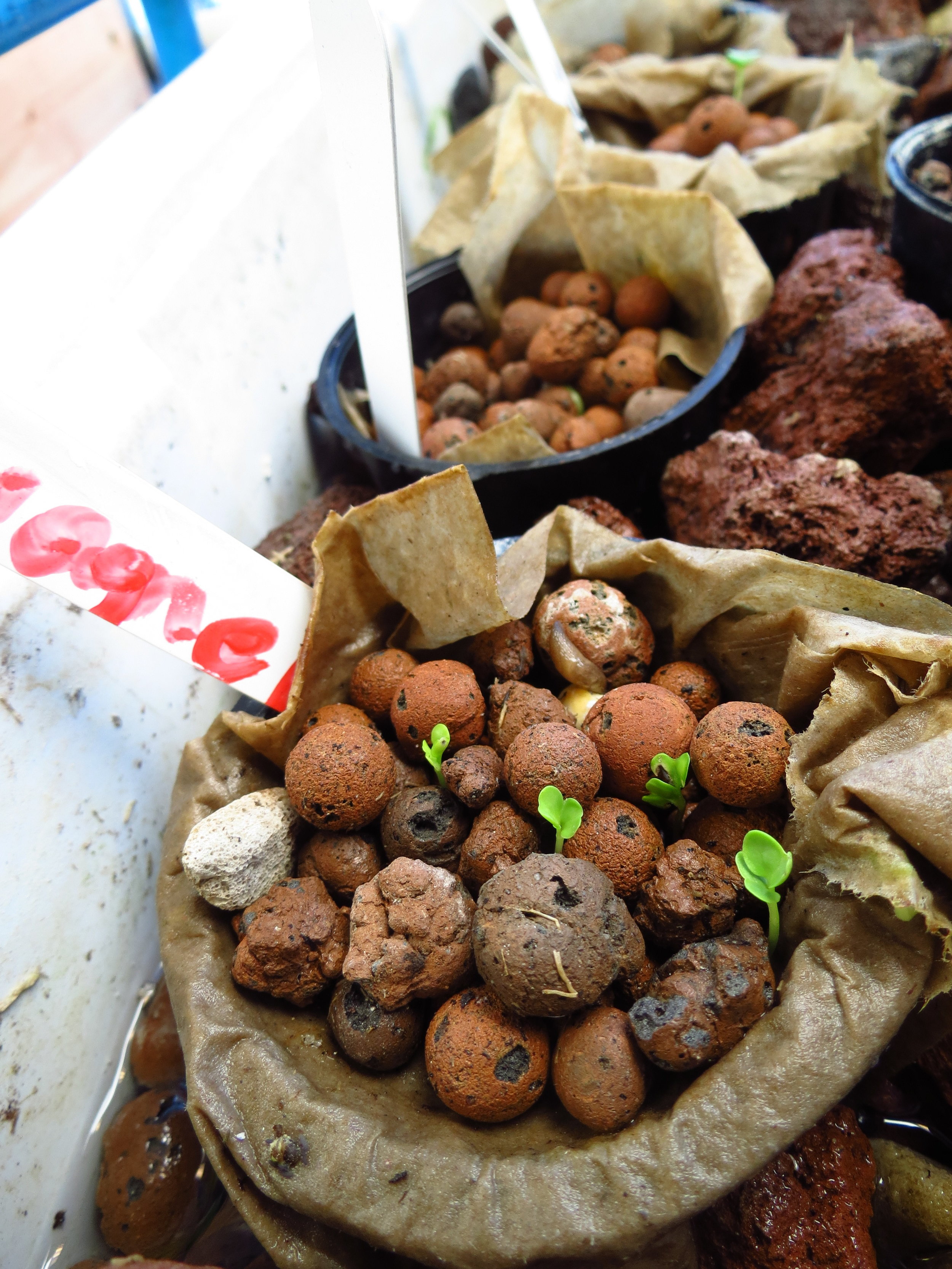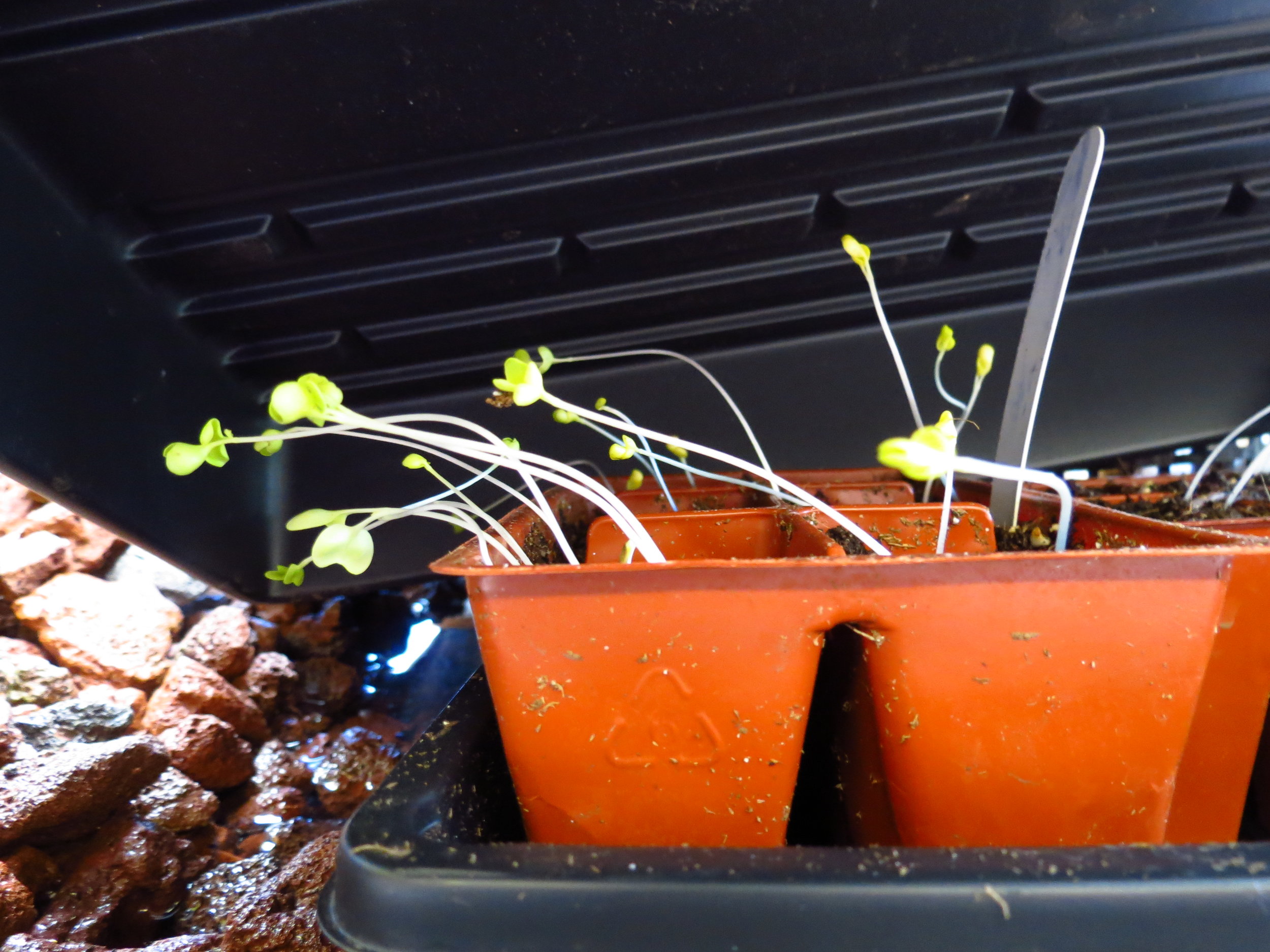The following blog post was written by Zachary Bigaouette,
Spark-Y Education Facilitator & Green Corps Member.
Background: Spark-Y Roosevelt High School program serves grades 9 - 12. Students learn about science, agriculture, and more through hands-on curriculum rooted in sustainability. This is one of two Spark-Y schools participating in garden-to-cafeteria programming
With the school year coming to a close there is a bittersweet aroma in the air as we are forced to say goodbye to the Senior members of the Roosevelt Urban Farming Squad (or RUF Squad for short). Although we are happy to see them graduate and move on to their next chapters in life we are sad to see them leave the farm that they have made their own. However, the senior RUF squad members are not leaving the school without leaving a lasting impression; this year Roosevelt’s campus has truly been transformed by the RUF squad through the various projects and sustainable systems or structures they have built.
At the start of the 2017-18 school year the RUF squad wasted no time and hit the ground running, immediately going to work on their outdoor farm and greenhouse, harvesting produce in the farm and selling it back to the school to be used in the school lunches through their Garden-to-Cafeteria program. The students in the RUF squad were also simultaneously learning about and taking care of their aquaponics system, truly exemplifying the hands-on learning experience that Spark-Y is all about! Needless to say the students appeared to have their hands pretty full, but it seems as if that wasn’t quite enough for the RUF squad because they continued to look forward and began to strive towards making their school’s campus even more sustainable. The RUF squad then built not one but TWO vermicomposting systems both complete with two vermicomposting bins adding up to a grand total of four bins filled with happy and hungry worms (more fondly known by the students at Roosevelt as red wigglers).
RUF Squad Seniors care for the
tiered vermicompost bins.
Building two vermicomposting systems to help reduce waste from the waste stream at Roosevelt is already a major accomplishment but still the RUF squad pressed onward, pausing only briefly to admire their work. The list of projects and tasks that the students worked on after this goes on and on, ranging from designing a rain garden to researching vining plants native to Minnesota to cover the turtle sculpture created by artist Christopher Lutter-Gardella (they landed on vitis riparia, more commonly known as frost grapes). The school year seemed to fly by and end, but in a final act of altruism by the seniors of the RUF squad they left behind their farm complete with seedlings for next year’s incoming RUF squad to harvest in the fall, setting them up for another successful school year.
With all of the projects and hard work behind them the RUF squad finally had time to take a breath and reflect on their past school year. Seeing all of the amazing work and effort they put into their farm this year, it was no surprise that they would put the same amount of effort into reflecting on the school year. Here’s just a handful of stunning reviews which would give Roger Ebert a run for his money!
Junior Aidan says: “This year in Urban Farming I enjoyed learning about our aquaponics system. I would like to get my own someday! It’s fun to watch the plants grow and to take care of the fish. There were also far fewer lessons and much more hands-on work than most other classes which is what I really prefer.” 5/5 White Tilapia
Senior Aaron comments on vermicomposting stating: “Vermicompost as an idea is pretty far fetched. The heightened nutrient-rich soil from red wiggler worm castings seems wild at first, but the hands-on experience helped me a lot to see for myself just how it worked. Not to mention the extra details I learned about what to feed and not to feed the worms. Overall, Spark-Y introduced me to this concept and helped me understand it in different ways throughout the school year.” 12/12 Red Wigglers
Junior Angel comments: “I really enjoyed this class because it was very hands-on and went more in-depth into how to plant in and care for our garden. It also provided me with the skills I need and the responsibility of taking care of our garden.” 2 Green thumbs WAY up
Here’s looking forward to next year’s RUF Squad, the bar was set high this year but I have complete faith that they will go above and beyond it.
